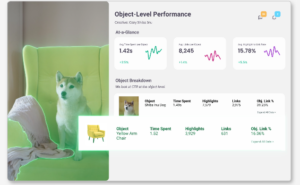By Martin Taylor, Deputy CEO at Content Guru
When recalling bad customer service experiences, dealing with a badly configured chatbot can easily come to mind as among the most frustrating. We’re in this situation because many businesses thought chatbots would be a panacea for every customer service provider’s woes. The experience for most is somewhat different and there’s a growing narrative that in the customer service context, they do more harm than good.
If chatbots are to survive and indeed reach their potential as enablers of great customer service, the technology needs a reboot.
Thankfully, the increasing sophistication of cloud, AI, and voice technologies is enabling chatbots to evolve and become a valuable part of every wider omni-channel portfolio. Pivotal to these developments is the convergence of written and spoken chatbot functionalities to offer a new and more successful Conversational User Interface (CUI) significantly more attuned to the task of keeping customers happy.
Let’s talk
The legacy issues around chatbots are deeply embedded — research focusing on ‘The State of Chatbots’ published by CCW, revealed that only nine percent of customers think that they would be best served by a chatbot for serious enquiries. It’s perhaps no surprise that the same group of respondents for a voice call were in excess of 80 percent. That doesn’t sit well with the growth in contact centre chatbots, with 80 percent aiming to adopt the technology by 2020.
So, what does the chatbot of the future look — or rather, sound like? Driven by a widespread resurgence in voice-led interactions, particularly home assistants such as Alexa, the growing acceptance of these technologies is helping to overcome the shortcomings of the previous chatbot generation.
The chatbot has often been pigeon-holed as nothing more than an online text-based engagement portal, but with Natural Language Processing (NLP) raising the bar around insight into voice data — especially in customer journey analytics — the voice-based chatbot should be the next to follow suit. It’s a development that will help shift the role of chatbots away from the supposed one-stop-shop of automated responses, and instead elevate them to become the shop front for intelligent customer engagement.
Customers with the most complex enquiries may still be transferred to a human agent, but because NLP allows customer calls to be categorised, by the time the agent answers a customer, they know exactly what their issue is. Queries can be resolved faster and more accurately, since the agent is more prepared and won’t have to spend time searching for answers in real-time during the call.
The right sentiment
Future chatbots will be capable of resolving many of the more routine enquiries using an automated CUI and sentiment tracking. This powerful analysis tool represents another big step for NLP by creating a much deeper picture of the caller and their needs for the agent. By analysing a mixture of keywords, tone of voice and volume, businesses can ensure that each caller is routed to the agent or department best equipped to deal with their enquiry.
For example, if sentiment analysis during a chatbot interaction detects a customer who is distressed, the call can be routed to an agent who is experienced or trained in handling these types of conversation. This streamlines processes and ensures customers are always served by the most qualified person.
While the chatbot in its original form is not destined to take over the world of contact centres, the future of the chatbot is hugely promising, as we enter a new phase of rapid innovation for customer engagement hubs.
It’s likely that before long we’ll arrive at a situation where consumers will find it extremely difficult — if not impossible — to tell the difference between human and chatbot. When that moment arrives, the chatbot will have finally realised its potential to become the ultimate customer service assistant, thanks to advances in sentiment tracking, NLP and machine learning.








